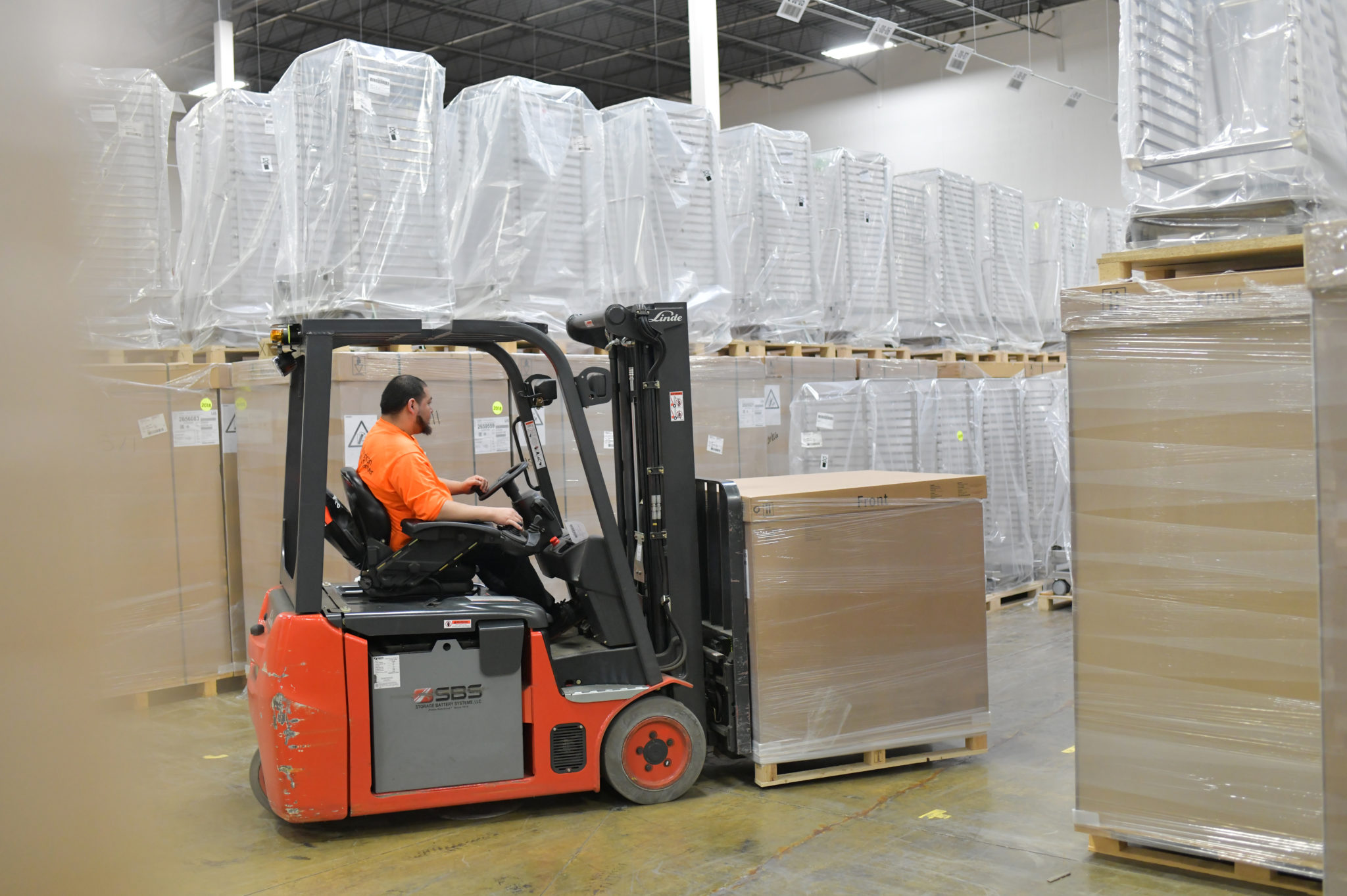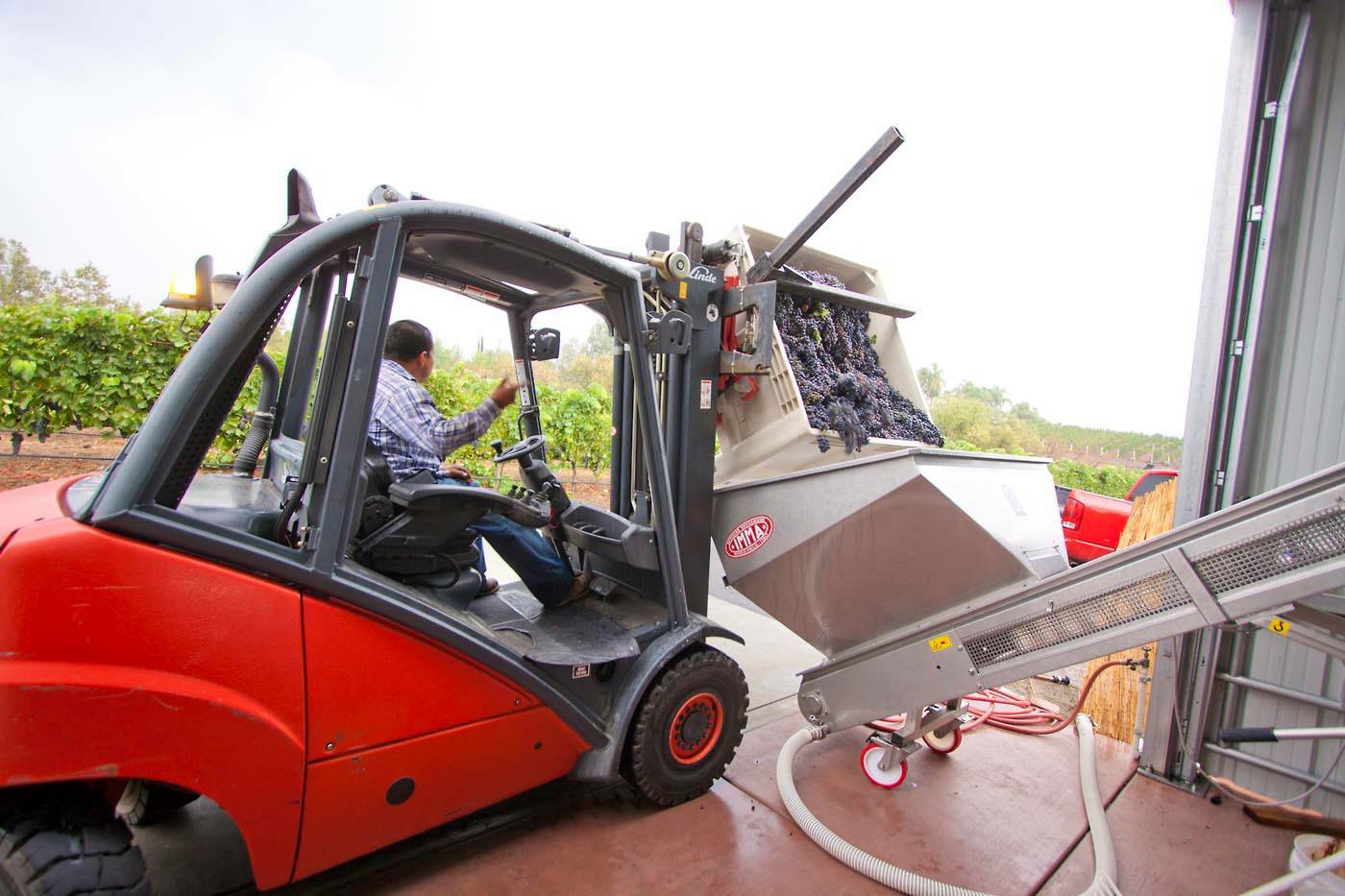No one is ever too safe in a warehouse environment. Being cautious, alert, and knowing the proper safety measures to take when operating a forklift are key. In most cases, the basics to forklift safety are obvious–know the type of forklift you’re using, keep an eye out for pedestrians, and be aware of how much weight the machine is able to hold–but there are still a number of overlooked aspects of forklift safety that need to be addressed. We’ve compiled a list of the top five things that are commonly missed when operating this heavy machinery.
The Batteries
Not only are the batteries used to operate forklifts large, buy they are filled with acidic chemicals that are dangerous when in contact with the skin. The danger lies in the sulfuric acid that could be splashed as well as the fumes that are released during the process of changing. Because the batteries must be charged often, be sure to only do so in the designated charging station that holds all of the necessary materials to both prevent something from happening and handle it if it does. For more details on how to properly and safely execute a battery change for an electric forklift, visit The United States Department of Labor’s website.
Lowering The Forks
When a forklift is not being used, the forks should always be lowered rather than elevated. Once the forklift is parked in its designated spot, (meaning it isn’t blocking an entrance, exit, or pathway) double check the parking brake and lower the forks of the machine to the ground. There are many reasons for this, but the primary one is to protect pedestrians from tripping, harming themselves, or being blocked in.
How To Carry Non-Symmetrical Loads
Forklifts are used for stacking, unstacking, and transporting heavy loads. The maximum weight that a forklift can hold varies, but the same rules for handling the transported goods are the same. Symmetrical loads are easiest to stack, so when combining multiple items that aren’t, pay close attention to how one item will transport next to another. Capacity, the lift’s position of gravity, and the shape of the items should all be considered.
Using Indicators
Tilt indicators, load weight indicators, damage indicators–they are all important and should not be overlooked. Each of these indicators serve a purpose. For instance, a load weight indicator is meant to notify the driver that the maximum weight is being reached and/or the forklift is in danger of tipping over.
Doing It Solo
Because a forklift operates as a one-man machine, it can be tempting to want to do everything on your own. That being said, having an experienced partner to help operate and signal the task at hand can both make it easier and help complete it faster. Whether it be directing, assisting with loading/unloading, or simply being an additional operator, having another body around to assist with forklift regulation will reduce hazards and prevent potential accidents.
Even if you think you’re an expert forklift operator, there is never any harm in double checking that you have all of your bases covered. From carefully exchanging a battery to listening to the indicators signal that something is wrong, always be aware of your surroundings and remember the details that are often overlooked. For more information on forklift products, details, and quotes visit KION at http://www.kion-na.com.


